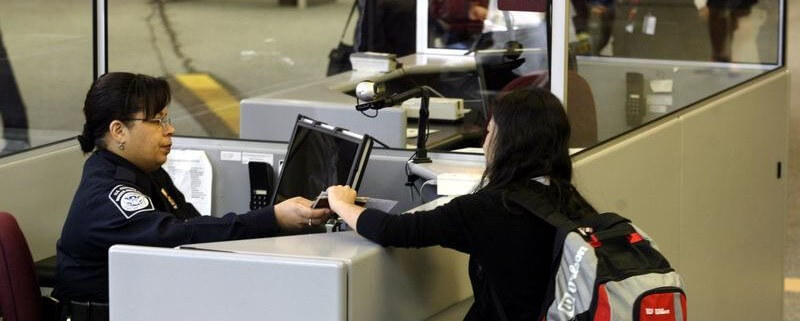New restrictions on drones are popping up all over. It’s not just the FAA and Feds, but local municipalities of all sizes are jumping on the bandwagon.
So it’s hard enough to keep track of the rules at home, what happens if you take your drone on vacation this winter?
One of the most popular winter destinations is Mexico, and our quest for clarity on drone rules starts there. The Mexican state of Quintana Roo, home to tourist enclaves such as Cancun, Cozumel, Playa Del Carmen and Tulum is one of the most popular destinations for travelers.

The range of possibilities for drone enthusiasts is amazing in this resort area at the tip of the Yucatan Peninsula, but knowing where you can fly your drone and what the rules are can be complicated to figure out. Anyone who has traveled to Mexico can attest to how inconsistent rules and regulations are on many subjects.
The best tip we can offer drone pilots in Mexico, even before you enter the country, is to expect anything. Think you know the rules? It may not matter if you encounter a security guard or government employee who thinks differently.
Just Get Me Through Customs
![]() Just bringing a drone into Mexico could cost you some money. Upon entry to Mexico, Customs allows visitors to bring 2 cameras as part of their gear, and drones currently don’t fit that description. We heard multiple reports of agents looking up the drone on the internet to determine the value and charging a 6% VAT tax to allow it into the country. On a Mavic Pro that could cost you as much as $100. We recommend you keep a copy of your purchase receipt in your drone bag any time you travel outside your home country.
Just bringing a drone into Mexico could cost you some money. Upon entry to Mexico, Customs allows visitors to bring 2 cameras as part of their gear, and drones currently don’t fit that description. We heard multiple reports of agents looking up the drone on the internet to determine the value and charging a 6% VAT tax to allow it into the country. On a Mavic Pro that could cost you as much as $100. We recommend you keep a copy of your purchase receipt in your drone bag any time you travel outside your home country.
If you are assessed a VAT for bringing your drone in, keep that receipt for any future visit so you aren’t charged again. Your experience entering Mexico may be complicated (or made easier) depending on your luck with the “Red Light Lottery”, the infamous, random result of pushing the button at entry to determine if you will have further screening. (Upate: Mexico has begun phasing out the ‘lottery light’ at airports)
Knowledge of Spanish is never a bad thing, and some Customs guards are more lenient than others, even knowing your specific drone model. You may be able to successfully argue that your drone fits into the category “toy”, or “camera”.
Once you’re safely through the airport, Mexico’s little known and randomly enforced rules are waiting for you. If you have a typical consumer drone such as a Mavic or Phantom 4 it falls below the 2kg (4.4 lb) restrictions and does not require either a permit of a pilot license. In theory the only issues you will have operating your drone will be based on location.
Related: Best DJI Mavic Pro Travel Accessories
Currently, drones may not be operated at night so daytime flying only. Always maintain line of sight with your drone and avoid flying near crowds in public spaces. If you assume the same rules of the US with respect to Airports, Cruise ports, etc. you will err on the side of caution.

/center>
The Basics
- All drone flights must be operated in daylight only
- There are no laws on operating drones weighing under 2kg other than they cannot be used at night
- A permit is required for operation of drones weighing between 2kg and 25kg
- A permit and pilot license are required for operation of drones weighing over 25kg
- Despite the lack of Mexican drone laws you should still be careful when operating a done in Mexico. Try to maintain visual contact with your drone at all times and avoid flying over large crowds or near airports1
So based on the Mexico weight guidelines a Mavic Pro would not need a permit to be flown in Mexico because it weights less than 2 kg. A Phantom 4 Pro drone, which weighs just over 1.38kg, would also not require a permit.
A DJI Inspire 1 or Inspire 2 drone would require a permit, as they weighs just over 2.845kg and 3.44kg respectively.
No Fly Zones At Some Ruins, Sort Of
Pushing the limits in a country whose legal system isn’t inline with your own is ill advised.
Many websites from Tripadvisor to various discussion forums and Facebook are full of first person accounts of drone confiscation at historic sites. But strangely enough, others have also posted success at places such at Coba and Teotihuacan where they have been accompanied by a staff person who monitored their drone use.

The only thing that is consistent about your experience in Mexico is to expect inconsistency.
If you take your drone to an historic site, ruin, cenote or similar attraction, make sure it is in it’s case. Make sure you have an ID attached to your case and that you have recorded the serial numbers of everything in the case. If your bag is “detained” at an attraction you want to make sure that there are no barriers to retrieving it.
If you arrived at the attraction in your own car, have a Plan B to store the drone in your car, or know in advance if locker rentals are available. Depending on where you’re staying, hotel staff such as the Concierge may be able to provide assistance or knowledge shared by other guests.
Resort Drone Etiquette
Some resorts in the Cancun tourist area have gone so far to institute their own drone policies. Ignore them at your peril.
Hotel chains such as Starwood (which includes the Sheraton, Westin, St. Regis, Four Points, The Luxury Collection, Le Meridien and Aloft) have a company-wide policy forbidding drone use “either over or inside of a Starwood property.”
At any resort expect security staff to be very interested in any drone operation within or near the resort perimeter.
Related: Best DJI Mavic Air Travel Accessories
Beaches in Mexico are slightly different, however, since the first 10 meters or so beach from the waterline is considered public. This explains why the daily parade of souvenir hawkers is even able to wander in front of the swankiest places. If you intend to operate your drone near a resort, ensure you are in the public zone. But be aware that permits resorts have for beach occupation include stewardship, maintenance and cleaning and security staff that have a different opinion than you are in charge.
You should be reasonably safe flying over water.
We’ve used Mexico as our example of the challenges in clearly understanding drone regulations in a foreign destination. But whether you’re planning to go to Canada or Katmandu you need to do more research, not less. Drones are too expensive to leave to chance of confiscation, and in many cases getting the footage that you want will make or break your vacation videos.
Do a Google search for Drone Clubs or enthusiasts in your destination and reach out to users on discussion forums or other websites. They may even be able to share some great information on the best places to use your drone on vacation.
Do You Need A Carnet?
If the purpose of your visit to Mexico is professional or business, or you may visit several times a year for recreation, then a Carnet might be the right choice for you.
Related: We Took The Mavic Air To Mexico: Here’s What We Learned
Basically a Carnet (pronounced kar-nay) is a passport for objects that are only going to be in the destination country temporarily.
If the value of the goods, like a drone or photography equipment, are under $10,000 the cost of a Carnet is about $235.
One of the benefits for frequent travelers is that a Carnet is valid for an entire year and works in 86 countries.
For more detailed information on obtaining a Carnet we recommend you visit Boomerang Carnets.
1 Source: uavsystemsinternational.com/drone-laws-by-country/mexico-drone-laws
[turbo_widget widget-prefix=text&obj-class=WP_Widget_Text&widget-text–title=&widget-text–text=%3Ca+href%3D%22http%3A%2F%2Fclick.dji.com%2FAPl4b4PWA33fUt9QnOWu%3Fpm%3Dad_image%22+target%3D_blank%3E%3Cimg+src%3D%22https%3A%2F%2Fu.djicdn.com%2Fuploads%2Fad_image_file%2Ffile%2F117%2Fmavic_728x90a.jpg%22%3E%3C%2Fa%3E&widget-text–filter=false]




Pingback: UPDATE: DJI CrystalSky Now Compatible With DJI Mavic 2
Right on Dave y I stay for ten weeks in Cancun and fish every morning off the beach. I bring two fishing drones every year without and problems until this year. They tried to hijack me 500 tax not 6 percent but 16 percent. I argued for one hour and they finally gave up. They mentioned that next year I should have receipts for my drones which I will bring doctored ones at low prices. I wonder if I wore a Rolex what that would cost?
Right on Dave I stay for ten weeks in Cancun and fish every morning off the beach. I bring two fishing drones every year without any problems until this year. They tried to hijack me 500 tax not 6 percent but 16 percent. I argued for one hour and they finally gave up. They mentioned that next year I should have receipts for my drones which I will bring doctored ones at low prices. I wonder if I wore a Rolex what that would cost?
The Customs people at Tijuana International Airport would not let me take my Mavic 2 Pro across. missed my flight to La Paz. The customs agent showed me a page with a Phantom 3/4 on it and the Spanish text said something the agents would not translate.